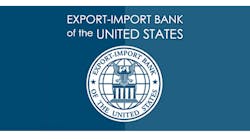The debate over extending the U.S. Export-Import (Ex-Im) Bank continues, for reasons incomprehensible to most pragmatists, is looming over future prospects for American exporters.
Businesses that rely on the Ex-Im Bank inexplicably find themselves in danger of being left in the cold without export credit financing for their overseas buyers if the Bank is not reauthorized by June 30th.
As that deadline approaches, proposed compromises have attempted to mitigate concern over so-called ‘Crony-Capitalism’ while keeping the Bank open.
One common theme in these proposals is placing requirements on the percentage of small businesses that the Ex-Im Bank must serve. Stricter rules, however, would do more harm than good for small businesses. Restricting the bank by imposing size constraints may be good politically, but is not functionally sound. For members of Congress who want to both look tough on “government hand outs” and retain the enormous benefits the Ex-Im Bank provides to their states and districts, reauthorizing the Ex-Im Bank with lending limits and stringent quotas for small business lending may seem like a smart compromise. However, concrete restrictions will only serve to limit the total number of loans Ex-Im is able to make and decrease its ability to continue to fulfill its current small business mandate.
These rules already require the Bank to direct at least 20% of its loans toward small businesses. And it should be noted that Ex-Im greatly exceeded this mark in 2014 with 39% of financed U.S. exports coming from small businesses, representing 90% of Ex-Im’s deals.
Additionally, the bank has significantly increased the speed at which it completes these transactions, with 89% of transactions completed in less than 30 days in 2013, up from 57% in 2009.
It has also introduced Global Credit Express (GCE) loans, which are targeted specifically at providing small exporters with short-term, pre-export working capital to spur expansion into new markets.
These steps are what the Ex-Im Bank should be doing to support small businesses in competitive industries. If Congress truly wishes to assist small businesses, they should end uncertainty by extending the Bank’s charter while also increasing the lending cap so that all credit-worthy exports for which the private sector is unwilling or unable to support can be financed. Ultimately, loans should be decided based on their creditworthiness, and not whether the export comes from a large or small company.
So why do some perceive the Ex-Im Bank as having an image problem, particularly with regard to a bias toward large companies? When 70% of the Bank’s loans cover exports from 10 companies, the public fairly has interest in getting an explanation. However, the Ex-Im Bank does not give money to large U.S. companies; instead it provides loans and guarantees to foreign purchasers of their products for specific deals and on an as-needed basis.
Some industries require this more frequently than others: specifically, makers of large, very expensive capital equipment whose products are demanded in developing markets which frequently have no private alternative to Ex-Im export financing. For example, 68% of Ex-Im loans go to developing markets and the Bank has a mandate to expand its operations in Sub-Saharan Africa.
The financial institutions in these countries simply do not have the capacity to finance the purchase of a $150 million dollar commercial airplane. It is no surprise then that GE, Caterpillar, Boeing , and other manufacturers of such large, complex, and expensive equipment have frequent interactions with the Ex-Im Bank.
Moreover, these large transactions stay on the balance sheet longer than the typical small business loan, so statistics skew toward overstating the volume of these loans.
However, Boeing succeeding does not mean small businesses are disadvantaged—just the opposite. Boeing’s supply chain consists of 17,000 suppliers, including over 7,500 small businesses, all of whom would see their businesses shrink if Boeing sells fewer planes. In other words, when a purchaser of a Boeing jet aircraft receives export credit assistance, it’s not just Boeing that benefits, but all of the small businesses in Boeing’s supply chain. In total, the Bank’s export credit assistance supported exports from over 33,000 small businesses in 2013, a far cry from the suggestion that small business are underrepresented in the Bank’s portfolio.
Helping American products reach buyers in developing regions despite the lack of privately available credit is a win-win for all involved, especially when the Bank makes an operational profit doing so.
Therefore, small business considerations pertaining to the Ex-Im Bank reauthorization should focus on outreach to make more small businesses aware of Bank services, allowing the Bank to underwrite export finance on smaller deals even when that means higher administrative costs, and encouraging small businesses to expand their businesses and increase exports.
Setting strict cut-offs for the percentage of loans that must go to small businesses could limit the Bank’s ability to promote American exports or could compel the Bank to back risky loans for small businesses. It’s a distortionary requirement that will at the end of the day produce no benefits for small American exporters.
America wins when its small and medium-sized businesses grow into large companies that compete in global marketplaces. The goal of the Ex-Im Bank is to facilitate that growth. Congress should craft its reauthorization bill to make sure firms graduating from small business status are not cut off from access to export credit from the Ex-Im Bank.
Adams Nager is a research assistant with the Information Technology and Innovation Foundation.



